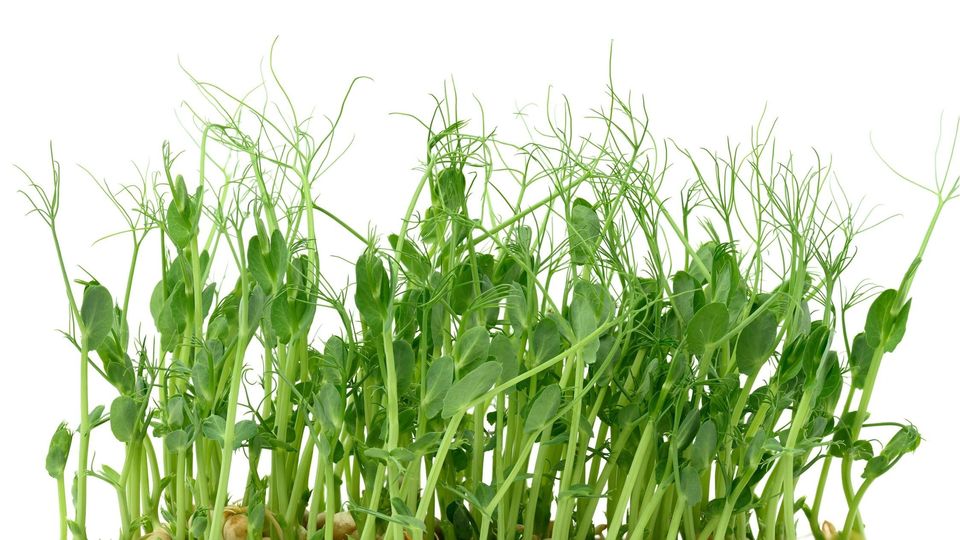Vitamin B12 Boosted in Biofortified Pea Shoots
A new method to biofortify pea shoots with vitamin B12 could help to tackle deficiency.

Complete the form below to unlock access to ALL audio articles.
Vitamin B12 plays an important role in many physiological processes in the human body, which is why we the recommended daily intake for the average adult is 2.4 µg per day.
Vitamin B12 occurs naturally in many foods of animal origin, including beef (2.4 µg/serving), milk (1.3 µg/serving) and salmon (2.6 µg/serving). However, ~6% of people aged 60 and over are vitamin B12 deficient, which can be caused by low dietary levels of vitamin B12, or an inability to absorb it. Individuals who adopt a plant-based diet are particularly at risk of experiencing B12 deficiency, which can cause symptoms such as anemia and neurological issues.
To tackle B12 deffiency, foods such as cereals and yeasts have been biofortified with the vitamin. Biofortifiction increases the nutritional content of a food crop using methods such as selective breeding, transgenics, gene editing or fertilizers.
“While vitamin B12 supplements are available, some people may find it more convenient and natural to obtain essential nutrients directly from whole foods,” says Professor Martin Warren, chief scientific officer for the Quadram Institute in Norwich. In 2020, Warren helped to initiate cluB-12, a research discussion group that “facilitates the sharing of knowledge and coordinates research into Vitamin B12 between scientists and healthcare professionals.”
“Fortified plants hold the potential to provide a more integrated way to meet nutritional requirements,” Warren adds.
A team of scientists from the John Innes Centre and the Quadram Institute, including Warren, have discovered a novel way to biofortify pea shoots with vitamin B12, utilizing ultrasonic aeroponic technology.
Ultrasonic aeroponic technology boosts vitamin B12 content of pea shoots
“In aeroponic horticulture, the roots of plants are suspended in a mist that supplies their nutrients and water. This leads to fast-growing healthy plants, because in a mist, the roots can also access plenty of oxygen,” explains Professor Antony Dodd, head of cell and developmental biology at the John Innes Centre. “One way in which this very fine mist can be produced is to shake the water molecules with high frequency (using ultrasound), causing them to float into an aerosol.”
The mist allows for precise delivery of nutrients to the crop, which enabled the team to increase the levels of vitamin B12 in the pea shoots, a common ingredient in bagged salads.
At the Quadram Institute, Warren had previously developed a highly sensitive mass spectromery-based method for quantifying vitamin B12 levels, which was adapted in this study to measure B12 in plant tissue. The researchers say that using their new method, a salad bag could contain as much vitamin B12 content as two portions of beef.
But would the B12 be released from the plants during digestion? This was an important question to address. “To work out whether this would happen, we worked with the laboratory of Dr. Cathrina Edwards at the Quadram Institute to adapt a method that simulates human digestion in test tubes to examine the digestive release of vitamins. We established that the B12 does indeed become available for absorption during simulated digestion,” says Dodd.
Scale-up and commercialization of vitamin fortification
Dodd highlights that a “major strength” of this work is its cross-disciplinary nature, which is possible thanks to the concentration of expertise in agriculture and food on the Norwich Research Park.
Several years ago, Dodd held a Royal Society Industry Fellowship to build a collaboration with the Bristol-based indoor farming R&D company LettUs Grow, during which time the researchers published a paper describing the ultrasonic aeroponic technology in New Phytologist. 1
Dodd and colleagues are preparing a paper describing the application of the technology to increase vitamin B12 content in pea shoots for publication. “The approach involves some modifications to off-the-shelf growing technology manufactured by LettUs Grow,” he explains.
“The LettUs Grow aeroponic growing systems are very scalable, so it would be straightforward to conduct this type of vitamin fortification on a commercial scale,” Dodd concludes.
Professor Antony Dodd was speaking to Molly Campbell, Senior Science Writer for Technology Networks.
This article is based on research findings that are yet to be peer-reviewed. Results are therefore regarded as preliminary and should be interpreted as such. Find out about the role of the peer review process in research here. For further information, please contact the cited source.
Reference: Eldridge BM, Manzoni LR, Graham CA, Rodgers B, Farmer JR, Dodd AN. Getting to the roots of aeroponic indoor farming. New Phytologist. 2020;228(4):1183-1192. doi: 10.1111/nph.16780




